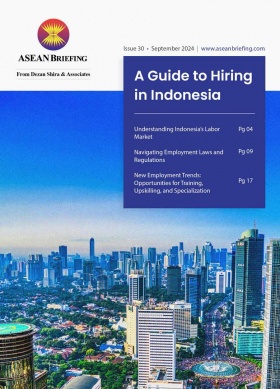Thailand to Implement Employee Welfare Fund
Thailand is poised to introduce an Employee Welfare Fund starting October 1, 2025, marking a significant milestone in the country’s labor protection framework. This initiative, grounded in the Labor Protection Act B.E. 2541 (1998), was formalized through a royal decree on November 13, 2024. The fund is designed to bolster employee financial security while imposing new obligations on employers to ensure compliance.
Contribution structure
From October 1, 2025, to September 30, 2030, employers and employees must contribute 0.25 percent of wages to the Employee Welfare Fund. This rate will double to 0.5 percent starting October 1, 2030. Contributions must be remitted by the 15th of the following month, and late or missed payments will incur a 5 percent surcharge per month on the unpaid amounts.
The phased approach to contribution rates aims to ease the transition for employers and employees, allowing them to adjust to the new system gradually. This incremental increase reflects the Thai government’s intention to balance employee welfare and employer financial capacity.
Purpose of the fund
The primary objective of the Employee Welfare Fund is to provide a financial safety net for employees in critical situations, including:
- Termination of employment
- Death
- Other circumstances as determined by the Employee Welfare Fund Committee.
This initiative offers employees a layer of financial protection against unforeseen events, providing reassurance and stability. Employers with more than ten employees are mandated to register their workforce with the fund unless they already offer comparable benefits, such as a provident fund. This exemption underscores the Thai government’s recognition of existing employer-led initiatives while ensuring broad coverage under the welfare scheme.
Implications for employers
The Employee Welfare Fund introduces new operational and financial responsibilities for employers, particularly those managing large workforces. Companies must establish robust mechanisms to calculate, deduct, and remit contributions accurately. Failure to comply could result in financial penalties and reputational risks.
Implications for employees
The introduction of the Employee Welfare Fund is a significant step forward for employee rights and financial security in Thailand. Workers will benefit from a formalized support system that addresses critical needs during periods of financial vulnerability.
However, employees should remain informed about their rights under the fund. Awareness of contribution rates, benefits, and procedures will enable them to advocate effectively for their entitlements.
Transition period and prospects
The initial contribution rate of 0.25 percent for both employers and employees from 2025 to 2030 represents a transitional phase aimed at minimizing the immediate financial impact. By 2030, the increase to 0.5 percent will likely enhance the fund’s financial sustainability, allowing it to cover a broader range of employee needs.
The phased implementation also provides an opportunity for employers to adapt their systems and budgets.
About Us
ASEAN Briefing is one of five regional publications under the Asia Briefing brand. It is supported by Dezan Shira & Associates, a pan-Asia, multi-disciplinary professional services firm that assists foreign investors throughout Asia, including through offices in Jakarta, Indonesia; Singapore; Hanoi, Ho Chi Minh City, and Da Nang in Vietnam; besides our practices in China, Hong Kong SAR, India, Italy, Germany, and USA. We also have partner firms in Malaysia, Bangladesh, the Philippines, Thailand, and Australia.
Please contact us at asean@dezshira.com or visit our website at www.dezshira.com and for a complimentary subscription to ASEAN Briefing’s content products, please click here.
- Previous Article What Multinationals Should Know About Singapore’s 15% Tax Rate
- Next Article 《东盟投资营商指南(2025)》全新上线








